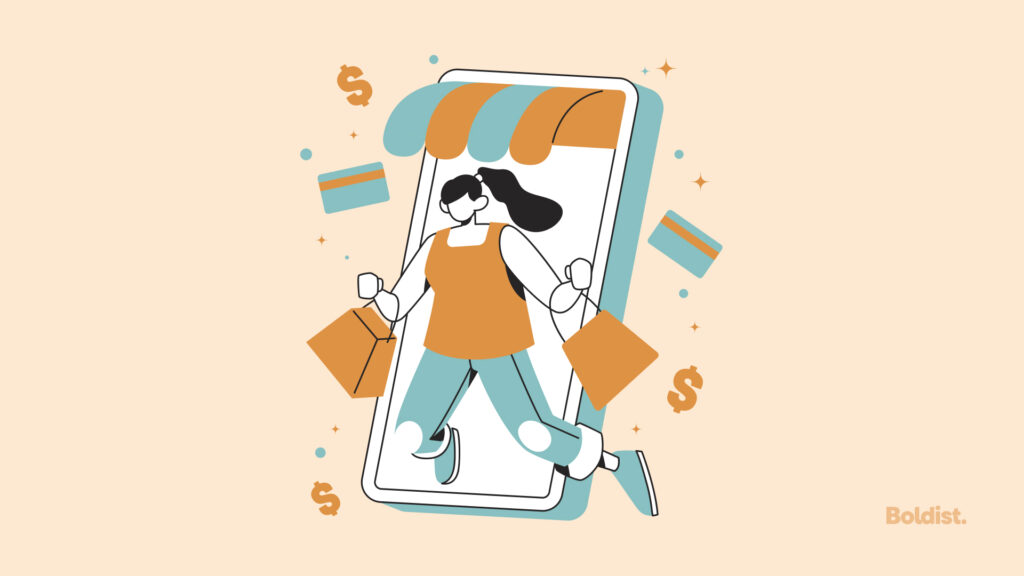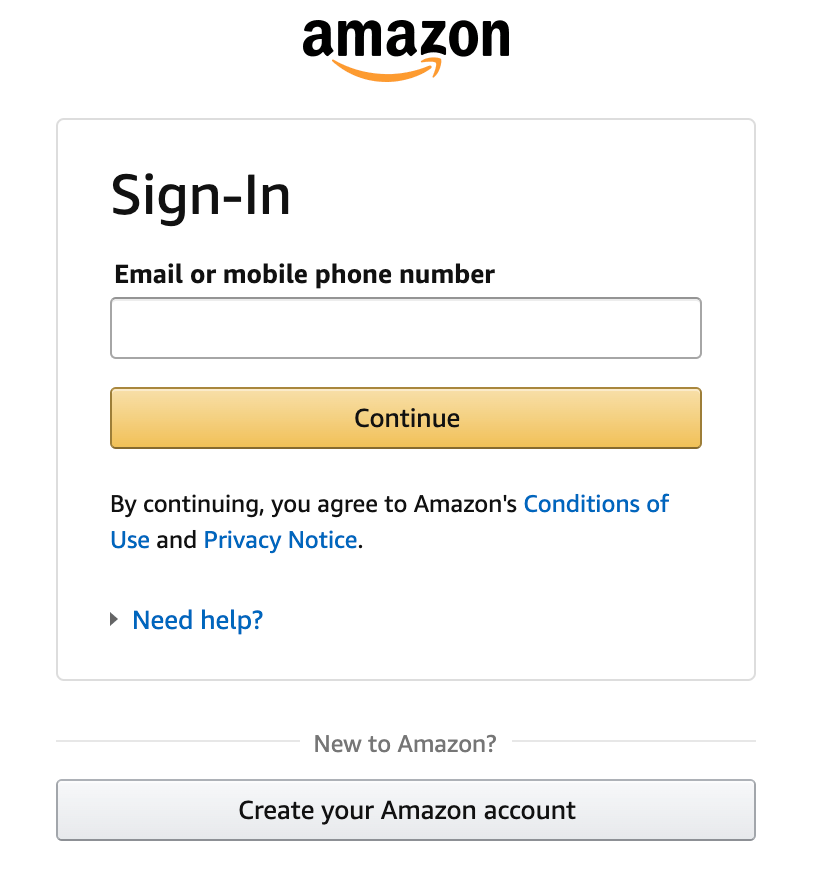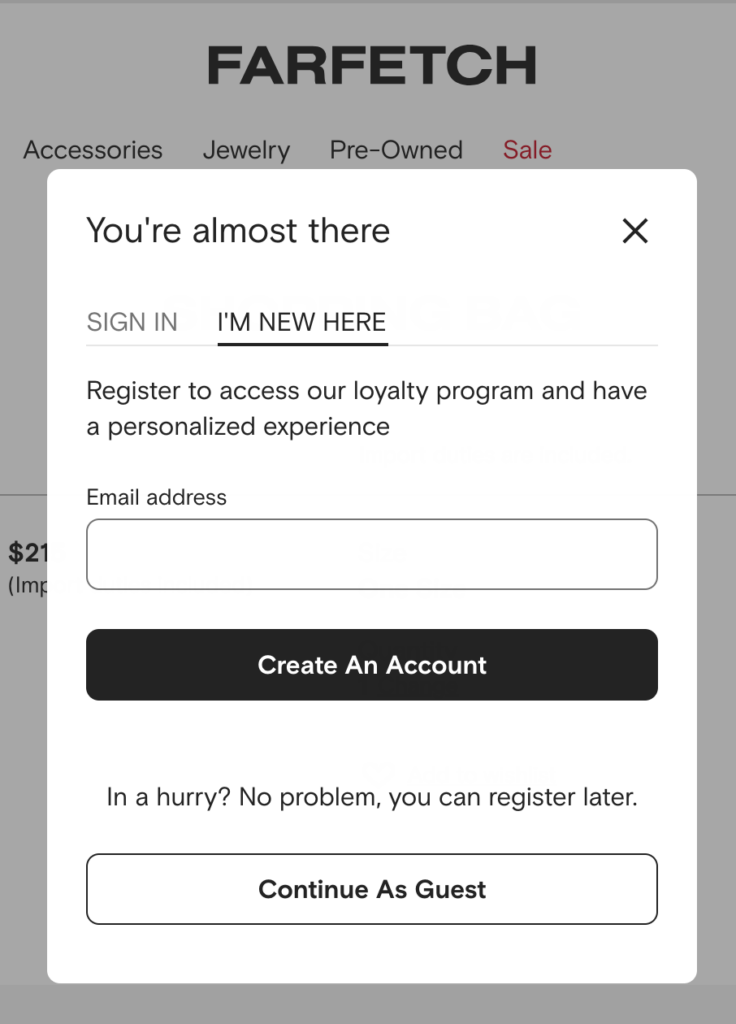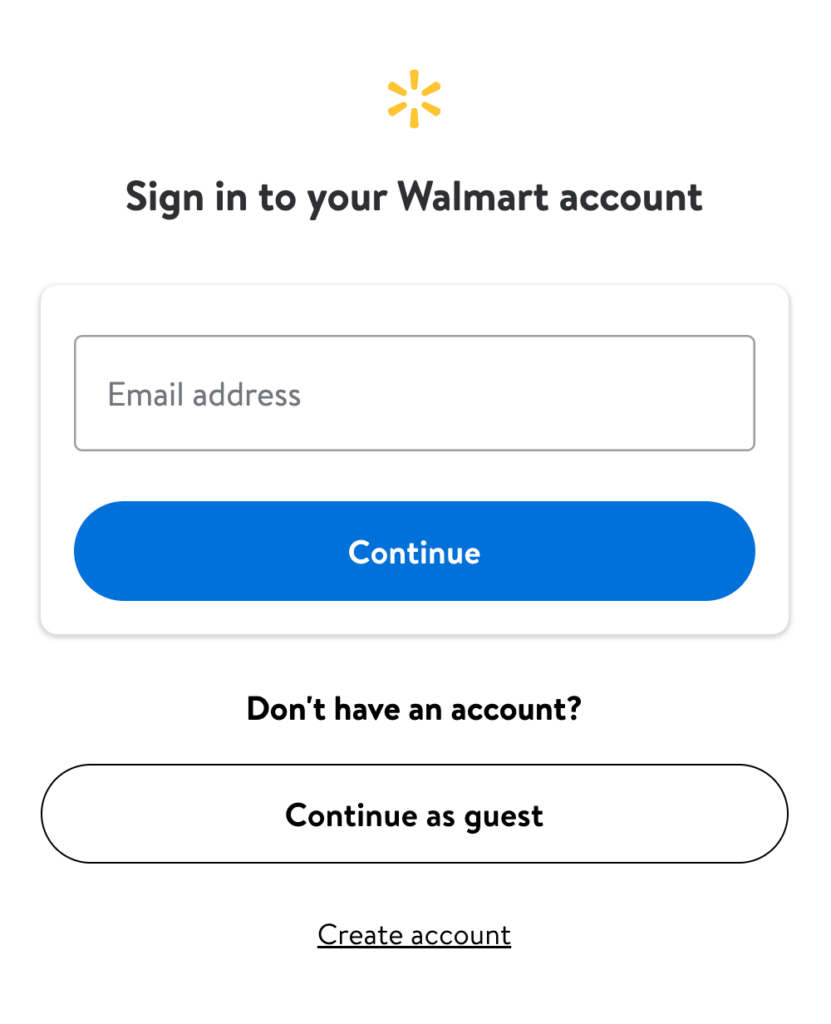You made it this far. Your target customer became aware of your business, kept you in mind throughout the consideration stage, and now they are finally ready to follow through on a purchase. They visit your website, pick out the perfect product or service tier, and head towards checkout.
Will they pass the finish line?
Of course, it’s a metaphorical question—and a successful customer journey continues well beyond the first purchase.
But the moment of checkout is a critical one. Closing the sale and initiating the beginning of a loyal customer relationship depends on having as simple and efficient a checkout process as possible.
And while design and form best practices get a lot of the attention when it comes to creating the ideal checkout, there is one feature that’s easy to overlook or even default to without thorough consideration: the guest checkout.
Enabling guest checkout can help you increase conversions like you wouldn’t believe by making checkout more straightforward than ever, but there are hidden costs.
Still, as more ecommerce stores embrace it every day, you might wonder—should you?
What Is Guest Checkout?
Guest checkout is an ecommerce feature that allows your customers to checkout as a guest without creating an account or logging into theirs. In other words, they skip anything having to do with an account, and your website doesn’t save their personal information.
This differs from the standard, where a customer creates an account before entering their billing and shipping information.
With guest checkout, there are fewer steps in the checkout process, so your customers can buy your product and be on their way faster.
That said, creating an account reduces friction in the future. By taking a couple more steps upfront, returning customers can save their information to their account and avoid ever having to enter it again, saving even more time.
Guest Checkout as a Solution to “Account Fatigue”
Modern-day society has a lot to offer, but we have to sign in or sign up everywhere we go.
By the time an individual is financially available to purchase your product or service, they’ve gathered a monstrous collection of accounts—many of which they never see again, let alone remember the password to.
Interacting with audiences in this way has spawned a problem called account fatigue. You can sum it up in that people are tired of collecting accounts and passwords.
As a result, users don’t want to sign up for an account unless they benefit from doing so, and if you require an account to buy your products, the path of least resistance might involve not purchasing from you.
In a 2022 survey conducted by the Baymard Institute on reasons for abandonment during checkout, 24% of responders selected “The site wanted me to create an account” as their reason for abandonment.

If you notice that potential customers begin your checkout process but don’t complete it, requiring an account could be why, and enabling guest checkout may help.
But it’s important to know that adding a guest checkout option comes with its own cons, and for some businesses, these setbacks are strong enough to outweigh the potential benefit.
The Pros and Cons of Guest Checkout
To decide whether using guest checkout or customer accounts is a better strategy for your business, look at the following pros and cons in the context of your business, and evaluate how much each will impact your customer experience, immediate sales, and long-term profitability.
You can always give customers both options, but you will lose out on some customers who would have otherwise created an account by including a guest checkout.
The Pros: Why Guest Checkout Is Important for Some Stores
It Reduces Commitment and Makes Checkout Faster
With guest checkout, you ask less of your buyers. They don’t have to commit to creating an account with you, giving you any more personal information than they want to, or the time it takes to do so.
This level of ease is even more valuable for shoppers on mobile devices, a large segment of buyers.
It Increases Conversion Rates
As a direct result of a faster, lower commitment process, you get the biggest pro of all: an increase in conversion rates. The main goal of most ecommerce stores is to increase sales after all.
It Makes a Good First Impression
The first time someone buys one of your products or services, they take a risk. They take cues from great reviews and web design, but unless they have followed your social media or newsletter for a long time, they have had limited interaction with your business.
If you provide a great user experience (UX) and your product delights, you may have a returning customer on your hands. In the meantime, your first impression is critical.
Guest access for retail is beneficial for first-time buyers because they may not trust your business enough to create an account just yet. The smoother checkout process doesn’t hurt, either.
It Encourages Impulse Purchases
Another benefit of the speed and ease of guest checkout is that it may help encourage impulse purchases. For 25- to 34-year-olds alone, impulse buys make up 46% of purchases.
It Falls Under the Category of High-Impact, Low Effort
Then there’s just how painless it is to add a “continue as guest” option. You can enable guest checkout in the settings of most website builders or have your web design firm handle it for you.
When it comes to low-hanging fruit, this one could be low effort and high-impact.

The Cons: Why Guest Checkout Doesn’t Work for Everyone
For some online businesses, guest checkout is a problem driver. The lack of a customer account can:
- Make it harder to view, update, and track orders.
- Make it harder for customers to reorder products.
- Make it harder to link a customer’s order history to programs like memberships.
- Make it harder to follow up with buyers and abandoned carts.
- Make it harder for customer service reps to assist customers with orders.
- Require a manual process for returns, exchanges, and refunds instead of an automatic one.
- Inhibit your ability to use customer data to improve targeting and marketing.
- Make it harder to build strong customer relationships.
Thus, adding a guest checkout may increase sales and make more money upfront, but it may also reduce your customer lifetime value (CLV), impacting profits down the road.
But as we said: sometimes it’s worth it.
The following factors can help you determine how much the challenges above will impact your CLV.
Purchase Frequency
If your customers are loyal and need to purchase your product often (like lotion or a food item), you probably have a high purchase frequency. How often your customers return can affect the impact of offering a guest checkout.
For instance, if customers frequent your online store several times a year—or even several times a month—you will benefit from using customer accounts because they will make it easier to manage customer orders, returns, reviews, etc. Fortunately, buyers looking for a repeat product or service are probably more willing to create an account.
Alternatively, customers may only return to seasonal or holiday stores once a year or every few years. If your customers order infrequently, they may not benefit as much from an account and are less likely to care to make one.
In these instances, you may be better off pushing account creation at other opportunities in your marketing funnel.
Repeat Purchases
Another differentiator is repeat purchases: do your customers come back to reorder the same product, or do they buy one product and never need the same one again?
If you sell a finite product, like cologne, your customers may want to reorder the exact item they had in the past, and a customer account can help.
While an account isn’t required to reorder a product, having a place where customers can find their order history will save them time and effort.
If they can’t remember the product’s name or the exact variation they liked, having a customer account may even save the sale. The more time they spend in the research phase trying to identify the product, the more opportunity they have to stumble across a competitor.
Walmart does a great job of simplifying the reordering process for customers who buy groceries online. Within your customer account, they provide a “Reorder My Items” button that leads customers to a list of every product they have purchased, organized by store section, with the option to add it to their cart.

Likelihood of Returns
Returns are frustrating for everyone involved, so the smoother you can handle them, the better it is for business. An efficient process saves time and may determine whether a customer is willing to give your store another chance.
With an account, customers log in and click a button or two to start a refund. With guest checkout, it gets a wee more complicated.
Customers have to figure out how to get in touch with your company’s customer service and begin a refund. If they still don’t have an account from there, they won’t have a place to view refund progress. It can also be more difficult for customer service agents to process the refund.
As a result, the number of refunds your business handles is worth considering.
If you don’t take refunds or if they are a rare occurrence, not having an account may not matter so much. You can also aim to make the returns process as simple and efficient as possible after the initiation phase. This means responding quickly, printing the return label for customers, paying for the return shipping, and pushing the refund through quickly.
However, if your store or service offers at-home try-on, trial periods, product trades or exchanges, or any other back and forth of a physical good, guest checkout will waste more time than it saves.
When an Account Serves Other Purposes
For some online stores and services, an account is integral to what they offer. For instance, those that provide online courses, insurance, memberships, or tools require customers to have an account to access and manage their products.
Another excellent example is Airbnb. Without an account, customers would have difficulty keeping track of their future trips, updating or canceling trips, and contacting hosts.
The Ability to Use Customer Data
With customer accounts, you can collect more information about your customers. And you know what they say: knowledge derived from good customer data is power.
Customer insight helps with target market research, goal evaluation, strategy evaluation, personalization, and creative marketing. Some of the most effective outreach comes from collecting customer data in customer data platforms (CDPs).
With a customer’s email and permission, you can implement email marketing strategies to build relationships and boost sales.
Some companies, like Netflix and Amazon, use customer data to show different home pages and products to users based on their interests.
If you have the financial means and workforce to make the most of customer data, it’s worth considering what you might lose with guest checkout.
How Other Stores Use Guest Checkout and Customer Accounts
You have seen the option to continue as a guest before, but if your checkout processes have been smooth, you probably haven’t noticed the variety of strategies used.
Looking at what top companies are doing can be insightful, so we’ve put together a list of 5 thriving companies that are taking different approaches.
1. Mad Hippie: Guest Checkout Only

As far as stores with guest checkout go, Mad Hippie is a rare flower in that they only rely on guest checkout. In fact, it’s not even called that on their website because customers don’t have to make a choice. They simply add to their cart and checkout by providing shipping and billing information when they’re ready to buy.
You may notice in the image above that there is no icon to sign in, sign up, or manage an account of any kind.
2. Amazon: Customer Account Only

Amazon rests on the other side of the spectrum. Perhaps due to its reputation or the fact that it processes a vast amount of orders every minute, the behemoth requires customers to create an account. You can browse the site as a guest and add items to your cart, but the second you attempt to checkout, you’re met with the option to sign in or sign up.
3. Farfetch: Both, Prioritizing Accounts

More common nowadays is the combo-attack, using both accounts and guest checkout. The first in our examples using this method is Farfetch, an online fashion retailer. They allow customers to sign in, create an account, or continue as guests.
The difference between Farfetch and the upcoming guest checkout examples is that Farfetch prioritizes signing in or signing up by placing those options first and highlighting the CTA with a darker color. “Continue As Guest” rests below in a lighter CTA box.
4. Walmart: Both, Prioritizing Guest Checkout

On the other hand, Walmart also gives the option to sign up or continue as a guest but prioritizes guest checkout. If the customer doesn’t already have an account, they portray the continue as guest option first. This CTA is also larger, bolded, and circled compared to “Create account” at the bottom.
5. Nike: Both, With an Account Incentive

Like Walmart, Nike will sooner let their audience continue as a guest. But unlike Walmart, they provide the incentive of free shipping for those who sign up for a Nike account.
They take a clever approach of offering something in return for the customer’s time, and it’s a benefit that likely increases the number of customers who create an account.
So, Is Guest Checkout a Good Idea?
Whether guest checkout is a good idea for your business depends on several factors, including:
- How often your customers make purchases, reorders, and returns.
- Your customers’ level of account fatigue.
- The type of product you provide.
- Your ability to use customer data.
- First-time purchasers’ level of awareness of your brand.
A popular choice is to accommodate individual preferences by giving customers the option to checkout as a guest or create an account. With this strategy, you can encourage more customers to create an account by listing the benefits of having one or offering an incentive.
If customer accounts aren’t essential to your business, you might consider allowing guests to complete the checkout process in fewer steps. Then, sell them on creating an account after you confirm their purchase.
If you think data should drive decisions, we agree. Do a few guest checkout and customer account variation tests to see what works for your brand. Look for when cart abandonment rates or conversions are highest, and note any indirect consequences on your customer support team and estimated CLV.


